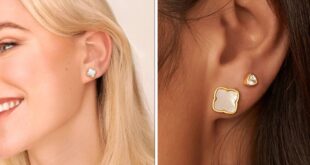
One in four dog owners admit they don’t think they could tell if their four-legged friend had healthy teeth or gums. The survey of 2,000 dog parents, found 30 per cent wouldn’t be particularly worried if their pooch had bad breath because they assume every dog does. Just a quarter would recognise excessive drooling and changes in mood or behaviour as a dental problem. Meanwhile, a fifth haven’t examined their dog’s teeth or gums in a month or longer.
The research was commissioned by Purina Dentalife, to launch its dog dental awareness campaign – backed by vet Dr Paul Manktelow – to help owners identify early signs of dental problems and understand what to watch for.
Dr Manktelow said: “Dental disease affects over 80 per cent of dogs over the age of three and often goes unnoticed.
“Early signs like bad breath, red or swollen gums, and tartar build-up can be easily missed, but the infection can progress and impact a dog’s overall health. That’s why daily dental care matters. Regular brushing is ideal, but many owners find it challenging.
“Dental chews can be a helpful part of the routine to reduce tartar.”
The study revealed 42 per cent of dog lovers say their pet has bad breath, whilst 24 per cent have noticed them struggling to eat. Similarly, others have spotted inflamed gums, and 13 per cent have seen their pup pawing at their mouth.
But 37 per cent confessed they had postponed taking their dog to the vet, hoping the problem would sort itself out.
A spokesperson for Purina Dentalife, the daily dental chew that gently scrubs a dog’s teeth as part of a healthy dental regime, said: “It’s completely understandable that busy dog owners might put off checking their pet’s teeth and gums – especially if their dog isn’t too keen on having their mouth looked at.
“That’s why we commissioned this research, to better understand the needs of pet owners and be as helpful as possible. Keeping on top of their dental health doesn’t have to be a struggle, and there are plenty of gentle, fuss-free ways to help.
“Regularly checking for warning signs and incorporating dental chews into their routine can help maintain healthy teeth and gums.
“It’s all about making those small habits easy – and avoiding a face full of dog breath in the process.”
To help keep their dog’s teeth healthy, 61 per cent of owners give their dog chews or sticks designed to support oral hygiene, whilst 43 per cent take them to the vet for a professional clean.
A further 40 per cent tackle the job themselves at home.
Of those who don’t brush their dog’s teeth, 34 per cent said their pet will not let them, whilst 14 per cent are under the impression it’s not necessary.
Vet Dr Paul Manktelow added: “It’s completely normal to search online when you notice a change in your dog’s behaviour or health. But while the internet can offer quick reassurance, it’s no substitute for a proper veterinary check.
“If your dog has persistent bad breath, red or bleeding gums, stops eating, or seems in pain, it’s time to call your vet. These can all be signs of dental disease that needs treatment.
“For general advice on prevention, like how to start a dental care routine – stick to trusted sources, but if you’re ever unsure, always speak to a vet.”
 Latest World Breaking News Online News Portal
Latest World Breaking News Online News Portal






